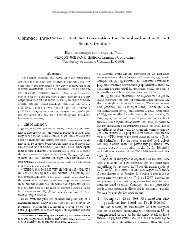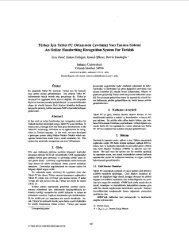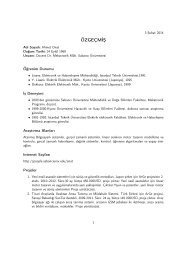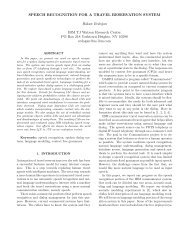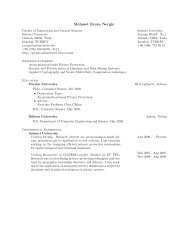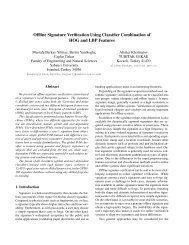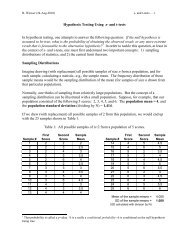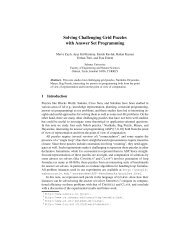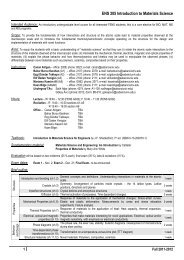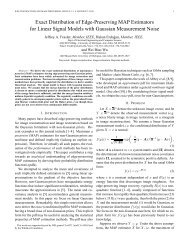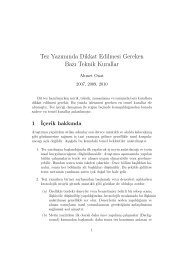Guidance Notes for the Rules of Korfball (from 1 August 2009)
Guidance Notes for the Rules of Korfball (from 1 August 2009)
Guidance Notes for the Rules of Korfball (from 1 August 2009)
Create successful ePaper yourself
Turn your PDF publications into a flip-book with our unique Google optimized e-Paper software.
chow to take a free passThe referee can still punish an <strong>of</strong>fender <strong>for</strong> an <strong>of</strong>fence occurring during <strong>the</strong> preparation time <strong>of</strong> a freepass. If <strong>the</strong> <strong>of</strong>fender is a defender, he can give an attacker a new free pass. If <strong>the</strong> <strong>of</strong>fender is anattacker, he can give a re-start to <strong>the</strong> defending team.The referee needs to take care in stopping any contact fouls whilst players take <strong>the</strong>ir positions <strong>for</strong> a freepass, particularly next to <strong>the</strong> post. No player should be allowed to straddle <strong>the</strong> post with one foot on oneside and one on <strong>the</strong> o<strong>the</strong>r. They must choose to stand on one side or <strong>the</strong> o<strong>the</strong>r. Players should also notbe allowed to place a foot between and in front <strong>of</strong> <strong>the</strong> legs <strong>of</strong> an opponent so that <strong>the</strong>y prevent thatopponent <strong>from</strong> moving into <strong>the</strong> circle.The referee must keep a strict hold upon <strong>the</strong> conditions concerning <strong>the</strong> set time and distance. At <strong>the</strong>same time as raising his arm <strong>the</strong> referee may indicate to <strong>the</strong> players, or tell <strong>the</strong>m, that <strong>the</strong>y need to take<strong>the</strong>ir distance. The referee does not have to wait <strong>for</strong> a complete four seconds be<strong>for</strong>e blowing his whistleto restart play. He must do so as soon as he is satisfied that <strong>the</strong> players are at <strong>the</strong> correct distance.If a defender repeatedly comes within <strong>the</strong> prescribed distance, <strong>the</strong> referee can award a penalty (see §3.11 a, explanation B) or, in an extreme case, treat <strong>the</strong> <strong>of</strong>fence as misbehaviour.As soon as <strong>the</strong> referee has blown <strong>for</strong> <strong>the</strong> free pass to be taken, <strong>the</strong>reby giving <strong>the</strong> taker <strong>of</strong> <strong>the</strong> pass fourseconds to bring <strong>the</strong> ball into play, <strong>the</strong> opponents can enter <strong>the</strong> free space granted to <strong>the</strong> taker <strong>of</strong> <strong>the</strong> freepass as soon as <strong>the</strong> latter moves <strong>the</strong> ball or makes a clearly visible movement <strong>of</strong> <strong>the</strong> ball, an arm or a leg.It does not matter whe<strong>the</strong>r this movement actually leads to a throw or is meant as a feint.Competition rules may prescribe that <strong>the</strong> four-second period <strong>for</strong> <strong>the</strong> players taking <strong>the</strong>ir positions canbe adapted <strong>for</strong> matches between very young players.Preventing <strong>the</strong> preparation <strong>of</strong> <strong>the</strong> free pass or trying to prevent <strong>the</strong> taking <strong>of</strong> <strong>the</strong> free pass may be treatedas misbehaviour if repeated.3.11 Penaltyawhen to award a penaltyExamples where a referee must award a penalty against a defender:• a male player hinders a female player who has a free chance or vice versa (§ 3.6 k)• a player prevents an opponent in a free position <strong>from</strong> shooting by, <strong>for</strong> example, pushing orrunning down (§ 3.6 i) or excessive hindering (§ 3.6 j)• a player has a scoring chance and a partner is hindered in passing <strong>the</strong> ball correctly and timelyto him because <strong>of</strong>a incorrect hindering by an opponent (§ 3.6 j)b by an opponent knocking <strong>the</strong> ball out <strong>of</strong> his hands (§ 3.6 h)c pushing, running down or clinging to by an opponent (§ 3.6 i)d hindering by an opponent <strong>of</strong> <strong>the</strong> opposite sex (§ 3.6 k)e hindering by two opponents (§ 3.6 l)• a defender influences <strong>the</strong> shot unfavourably by moving <strong>the</strong> post (§ 3.6 r)• <strong>the</strong> defending team encroaches <strong>for</strong> <strong>the</strong> second time within 2.50 m at <strong>the</strong> same free pass (§ 3.10)A penalty should also be awarded if any <strong>of</strong> <strong>the</strong> infringements <strong>of</strong> § 3.6 h, i, j, k or l mentioned above iscommitted by a player, or players, in <strong>the</strong> o<strong>the</strong>r zone and this leads to <strong>the</strong> loss <strong>of</strong> a free scoring chance.Examples where a referee may award a penalty against a defender:• holding <strong>of</strong>f, clinging to or running against <strong>the</strong> attacker thus preventing him <strong>from</strong> running into afree position (§ 3.6 i)• incorrect hindering, thus preventing him <strong>from</strong> passing <strong>the</strong> ball (§ 3.6 j)• beating <strong>the</strong> ball out <strong>of</strong> his hands (§ 3.6 h)• repeated encroaching within 2.50 m during <strong>the</strong> taking <strong>of</strong> a free pass be<strong>for</strong>e <strong>the</strong> player taking <strong>the</strong>pass has moved <strong>the</strong> ball (see guidance note <strong>for</strong> § 3.10 c )• repeated failing to take a position <strong>of</strong> at least 2.50 m <strong>from</strong> <strong>the</strong> place <strong>of</strong> a free pass within <strong>the</strong> 4-second preparation time <strong>for</strong> <strong>the</strong> free pass.bplace <strong>of</strong> a penalty14



